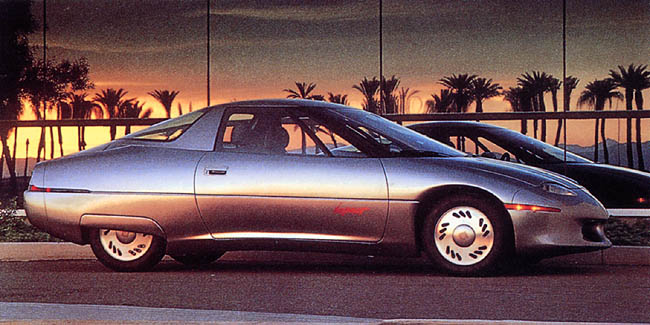So I’ve been reading up on electric cars for a while now, and over that time a pretty clearly defined mystery plot unfolded before me.
Then:

The modern day electric car saga (not the one from a century ago) began in 1996 when GM released the EV1 to customers in California on a lease only basis. Customers loved the car for its convenience, environmental standards, and impressive performance. The EV1 could blow away combustion engine varieties in its class in 0-60 trials. Depending on what generation you drove, the batteries could last from 70-160 miles on a charge. Patrons who were able to lease one gave it rave reviews, but the car was inexplicably pulled off the market in 1999, and the leased cars were taken back by GM and crushed. The car was a completely capable, $30,000 to $40,000, plug-in ev that did not even make it to the 21st century. This was before lithium-ion batteries, the popularity of laptop computers, and numerous other technological advances of the past ten years.
One name stuck out like a sore thumb from when I watched Who Killed the Electric Car (I encourage everyone to watch). His name was Alan Cocconi and he developed the 100,000 watt amplifier for GM that would allow the first generation EV1 to travel 90 miles on a charge, and go 0-60 in 7.9 seconds, with lead-acid batteries. I wrote an article completely dedicated to his work from development of the EV1 to his company, AC Propulsion, and his electric drivetrain, now used in the Venturi Fetish, Wrightspeed X1, and the Tesla Roadster.
Now:

So how do you rectify it being 2008 and the advances in lithium-ion laptop battery technology, with the auto industry’s failure to release an electric car with comparable performance to the EV1 at a reasonable price? Look at this list of 10 electric cars available now. It’s a sad motley crew of too expensive and barely capable of 45 mph. And it’s not the fault of the startups. How can these small companies compete with big auto? But notice the two electric supercars on the list, the Tesla Roadster and the Venturi Fetish. What do they have in common? Alan Cocconi’s AC propulsion electric drivetrain. Why is this man not employed by a major automaker? If Tesla had GM’s scale, they would have no problem selling an electric vehicle far superior than any combustion engine car to the masses for under $30,000. Why can’t major automakers utilize this technology instead of giving us the over hyped hybrid Chevy Volt? I would love to interview Alan Cocconi to see what his thoughts are on this.












